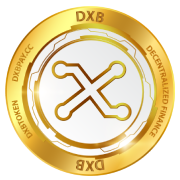Blog Detail
How does DXB fix DeFi’s biggest challenge – impermanent loss?
According to Finder, companies like OKEx protect against impermanent loss, which is a severe challenge to DeFi users. If you have been around for a while, you surely have heard the term “impermanent loss” a few times. Sometimes, it is mentioned with resignation by seasoned experts. At other times, it is an exclamation from a newb who just could not understand what happened to their funds. It happens when the value of your token fluctuates compared to when you saved them in the pool. The bigger the change, the higher the loss.
So, what is it exactly, and how can DXB help to resolve this problem?
Impermanent loss: A brief overview
Impermanent loss occurs when you add liquidity to a liquidity pool, and the value of your deposited assets changes compared to when you deposited them.
The more significant the change, the more vulnerable you are to impermanent loss. In this case, the loss implies less dollar value at the time of withdrawal than at the time of deposit.
That is why pools that include assets that endure in a comparatively minute price range (less volatile) suffer less from the effects of impermanent loss. Stablecoins and various wrapped versions of a coin will remain in a relatively controlled price range. Hence, the risk of impermanent loss for liquidity providers is considerably less for these tokens.
So why do liquidity providers still offer liquidity if they are vulnerable to possible losses?
Well, they provide liquidity with the expectation that trading fees offset the impermanent loss. Even pools on Uniswap that are vulnerable to impermanent loss still turn profitable thanks to the trading fees.
DXB vs Impermanent Loss
Impermanent loss is among the most basic concepts anyone who wants to contribute liquidity should know.
In short, if the value of the deposited assets increases from the time of deposit, the liquidity provider may be vulnerable to impermanent loss.
Smart Contracts
Smart contracts have become commonplace with the emergence of the BSC contract, and it’s a much better method in ensuring safety.
Bitcoin was made to be a peer-to-peer network, but now with over 10,000 nodes, doing any transaction takes a lot of time for replication to occur in all the nodes, blocking all time-sensitive transactions.
Smooth micro-transactions
With higher gas fees and longer transaction verification times, sending small transactions over the Bitcoin network is not worth it. Conversely, the DXB token is a digital asset that collects several technologies for a DeFi system, merchant payment gateways, and charities.
DXB wants to create a user-friendly system that uses cross-chain benefits to provide a safe tool that easily and quickly verifies transactions for online merchants. The speed will ensure the volatility of liquidity doesn’t affect transactions.
Moderate fees
DXB is geared to solving some of the fundamental problems of digital asset application and gas fees. It begins by insulating new investors as much as it can from impermanent loss.
Therefore, DXB is not a farming protocol. Instead, every transaction incurs a 7% fee which it adds to the liquidity pool of PancakeSwap. DXB holders obtain rewards in the form of BNB tokens for holding the coin. The stock of DXB will not be ruined by farming rewards.
Conclusion
Cryptocurrency solutions can be remarkably rapid through the usage of the most advanced technologies.
DXB is committed to solving some of the fundamental problems of comprehensive digital asset practice. DeFi and algorithmic trading.
DXB is committed to a long-term vision of creating a sustainable and powerful ecosystem that revolutionises the way we invest, trade and donate.

